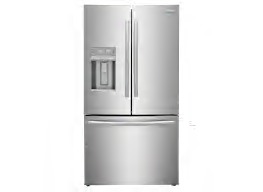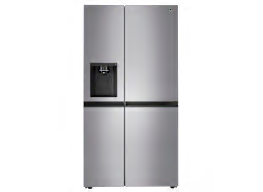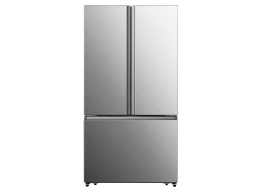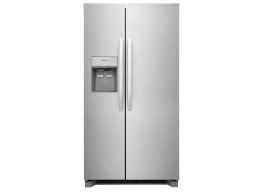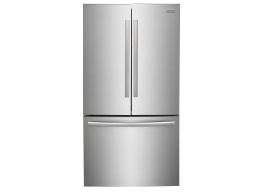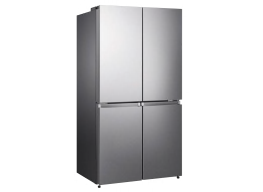5 Steps to an Organized Refrigerator
Most foods last longer—and stay fresher—when stored in their proper place
After schlepping to the supermarket and back, you might be tempted to unload your haul as quickly as possible so that you can kick back and relax—or at least move on to other household chores. But stocking your refrigerator the right way will help cut down on food waste, not to mention the risk of foodborne illness.
Smart food storage takes into account the fact that climate conditions vary throughout a refrigerator. Door bins and upper shelves tend to be warmer than bottom shelves and deli compartments. Crisper drawers, meanwhile, can often be adjusted to create more or less humidity, depending on what’s going inside.
Here’s a step-by-step guide to organizing your refrigerator. Even if your refrigerator’s layout differs slightly, the same basic storage principles should deliver optimal results.
Step 1: The Door
In our temperature performance tests, which occur in climate-controlled chambers where we crank the heat up to 110° F, temperatures on the refrigerator door climb a couple of degrees higher than the main compartment. That’s too warm for milk and eggs, despite the fact that many refrigerators have gallon door bins and egg-shaped compartments that seem like ideal places for these items. Instead, reserve the door for items that can handle warmer conditions, including the following:
• Butter
• Condiments
• Juice
• Cooking oils
• Soda
• Water
Step 2: The Meat/Deli Bin
This storage option is most common on French-door bottom-freezers, where it typically sits beneath the crisper drawers. It’s a helpful feature, especially if the temperature can be adjusted to best accommodate a range of foods—cooler for cured meats, for example, and warmer for a platter of hors d’oeuvres. Here are the items that belong in the bin:
• Bacon
• Cheeses
• Deli meats
• Hot dogs
Step 3: The Crisper Drawers
Crisper drawers are designed for produce. On many refrigerators, the humidity can be adjusted from high—ideal for most wilting vegetables—to low, best for a lot of fruits, plus some vegetables with thin skins that like the air a bit drier. Even if your crisper drawers aren’t adjustable, the following division will promote maximum freshness by keeping like-reacting produce together.
Low-Humidity Drawer
• Apples
• Avocados (once ripe)
• Grapes
• Mushrooms
• Peaches, pears, plums, nectarines (once ripe)
• Peppers
• Melon (once ripe)
• Summer squash
High-Humidity Drawer
• Broccoli
• Carrots
• Cauliflower
• Green onions
• Leafy greens
Can You Store Fruits and Vegetables in the Same Refrigerator Drawer?
We don’t recommend it. Some produce, including fruits such as pears, give off ethylene gases that make ethylene-sensitive produce, like broccoli, spoil faster if kept nearby. In fact, many fridges have “crisper drawers” that are designed to keep fruits and vegetables separated, and in a special environment that will keep them fresher longer. In general, fruit lasts longer in low-humidity conditions, while many vegetables last longer in high humidity. Some refrigerators, like the GE GNE21FSKSS French-door refrigerator, let you control these environments via vents on each drawer. For fruits, the vent should be more open to allow for greater airflow; for vegetables, the vent should be more closed for higher humidity.
Step 4: The Lower Shelf
The lower shelf, usually located in the middle of the refrigerator, tends to be the coldest part of the refrigerator. This makes it ideal for storage of items that are more susceptible to developing harmful bacteria, including the following:
• Eggs (in their original carton)
• Milk
• Raw fish, meat, and poultry (on trays to catch drippings so as not to contaminate other foods)
Step 5: The Upper Shelf
The upper shelves, conversely, are the warmest part, with temperatures often reaching up around 40° F. That’s too warm for milk and eggs, though yogurt is okay because it’s fermented. Here’s the complete list of what to store on the top shelf.
• Jam and jelly
• Leftovers (large amounts should be transferred to several small containers so they’ll cool faster. Position toward the front of refrigerator so you don’t forget them)
• Peanut butter
• Snacks (like hummus and fruit cups)
• Yogurt
Refrigerator No-Nos
Knowing what goes where in the refrigerator can prevent spoiling. You also need to know which foods don’t belong in the refrigerator in the first place. Here’s a look at that list:
• Bananas
• Bread (freezer is okay)
• Coffee
• Garlic
• Onions (keep away from potatoes)
• Potatoes (keep away from onions)
• Tomatoes


















